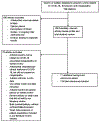A Review of Pathophysiology, Clinical Features, and Management Options of COVID-19 Associated Coagulopathy
- PMID: 33378321
- PMCID: PMC8122038
- DOI: 10.1097/SHK.0000000000001680
A Review of Pathophysiology, Clinical Features, and Management Options of COVID-19 Associated Coagulopathy
Abstract
There is increasing evidence that novel coronavirus disease 2019 (COVID-19) leads to a significant coagulopathy, a phenomenon termed "COVID-19 associated coagulopathy." COVID-19 has been associated with increased rates of both venous and arterial thromboembolic events, a source of significant morbidity and mortality in this disease. Further evidence suggests a link between the inflammatory response and coagulopathy associated with COVID-19. This presents a unique set of challenges for diagnosis, prevention, and treatment of thrombotic complications. In this review, we summarize and discuss the current literature on laboratory coagulation disruptions associated with COVID-19 and the clinical effects of thromboembolic events including pulmonary embolism, deep vein thrombosis, peripheral arterial thrombosis, and acute ischemic stroke in COVID-19. Endothelial injury and augmented innate immune response are implicated in the development of diffuse macro- and microvascular thrombosis in COVID-19. The pathophysiology of COVID-19 associated coagulopathy is an important determinant of appropriate treatment and monitoring of these complications. We highlight the importance of diagnosis and management of dysregulated coagulation in COVID-19 to improve outcomes in COVID-19 patients with thromboembolic complications.
Copyright © 2020 The Author(s). Published by Wolters Kluwer Health, Inc. on behalf of the Shock Society.
Conflict of interest statement
The authors report no conflicts of interest.
Figures
References
-
- : COVID-19 Dashboard by the Center for Systems Science and Engineering at Johns Hopkins University. 2020, p. https://coronavirus.jhu.edu/map.html.
Publication types
MeSH terms
Grants and funding
LinkOut - more resources
Full Text Sources
Medical



